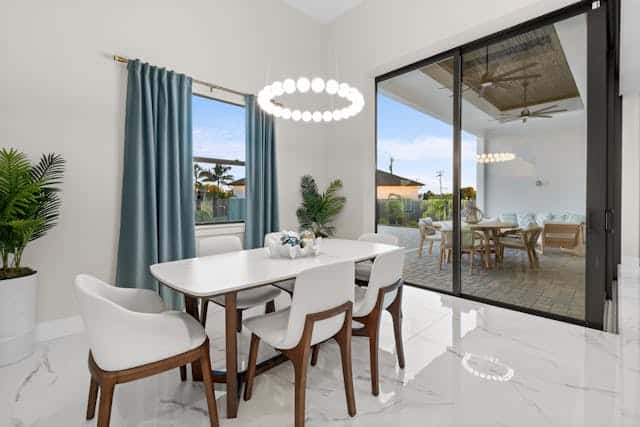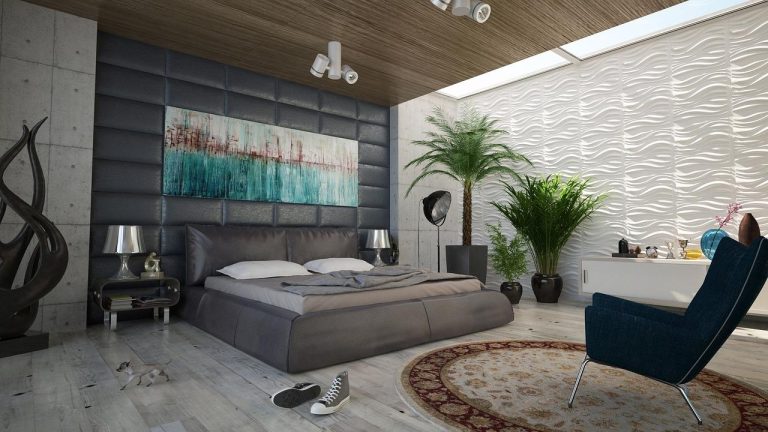How Comfort Looks Different for Every Room in Your Humble Abode
This post contains affiliate links. Click here to read my affiliate policy.
Last Updated on May 19, 2025
What feels cozy in the bedroom won’t always work in the kitchen, and what brings peace to a bathroom might feel out of place in a living room. That’s the beauty of a well-thought-out home—it adapts to your routines and needs in every space without feeling the same throughout. Each area should give off its distinct vibe based on how it’s used and what kind of comfort makes the most sense there.
Instead of aiming for one version of coziness across the house, it’s better to think about what makes each room work for you. Soft lighting, useful furniture, textures, and layout all play a part. The goal is to create spaces that feel natural and easy to live in, whether that means a plush mattress to sink into or a kitchen setup that doesn’t make you stretch or strain to get things done.
Bedroom Comfort Starts with the Basics
A good night’s sleep sets the tone for your entire day, and comfort in the bedroom often begins with a high-quality mattress. Tempurpedic mattresses are a popular choice because of how they contour to the body, offering support without that stiff feeling. Their memory foam design helps reduce pressure on joints, making them great for side and back sleepers. If you’ve ever woken up sore or had trouble falling asleep because of an uncomfortable bed, switching to a Tempurpedic is a good idea.
It’s worth checking out a Tempurpedic mattress sale when you’re planning a bedroom upgrade. Pairing that mattress with blackout curtains takes it even further—blocking out outside light, especially in urban areas or during summer mornings, creates a much more restful environment. Together, they turn a basic bedroom into a relaxing space that’s built for sleep and recovery.
Kitchen Function Feels Best
Comfort in the kitchen isn’t about softness; it’s about how smoothly everything works. A functional layout helps you move from fridge to sink to stove without bumping into corners or struggling with space. When everything is where you expect it to be, cooking feels more enjoyable and less like a chore. Simple details like wide walkways and proper counter space help a lot more than people realize.
Storage is another part of the comfort equation. When pots, pans, and cooking tools are within easy reach, it takes the stress out of meal prep. Cabinets that open smoothly, pull-out drawers, and organized pantry spaces add ease to daily tasks.
Dining Feels Better When It’s Soft
Dining rooms are made for conversation and connection, and cushioned chairs make it easy to stay at the table a little longer. Hard, uninviting seating may look good in pictures, but in practice, it gets uncomfortable fast. Upholstered chairs with just the right amount of support encourage people to relax, chat, and enjoy the moment without constantly shifting in their seats.
Natural textures like wood, linen, and woven materials also help make the room feel warmer. They add a bit of softness to the environment, even when the rest of the decor is simple. Whether it’s a wood dining table, a woven runner, or linen napkins, these details add up to a more grounded space. A comfortable setup makes those moments even better.
Living Room Layers Matter
The living room often gets the most use in a home, so it should feel easy to be in. Soft throws, cushy pillows, and layered textiles help turn it into a space where you can actually relax. Whether it’s a quiet evening or a movie night, those small touches make the room more inviting. A stiff sofa with no extras doesn’t give off the same feeling as one you can sink into after a long day.
Lighting is just as important. Soft, adjustable lighting gives you more control over the atmosphere. Table lamps, wall sconces, and even string lights can shift the mood from bright and energetic to calm and restful. Rather than relying only on overhead lights, using a few sources of softer light can really change how the room feels at different times of day.
Office Setup That Supports You
Home offices work best when they’re designed to reduce strain and boost focus. Ergonomic furniture, like an adjustable chair with proper back support and a desk at the right height, can make long hours feel a lot more manageable.
Beyond furniture, the overall atmosphere of a home office matters just as much. Quiet surroundings, minimal clutter, and natural light create a space that encourages focus without feeling stiff. A few personal touches, like a plant or framed photo, help balance productivity with a sense of calm.
Patios That Invite You Out
Patios and balconies have their version of comfort. Durable furniture that holds up in different weather conditions is key to making these spaces feel livable. Whether it’s a weather-resistant lounge chair or a simple bench with cushions, having a spot to sit that doesn’t require a lot of fuss helps you enjoy the outdoors more often.
Soft outdoor cushions, rugs, and even a throw blanket for chilly evenings help create an inviting vibe. You don’t need a large setup to make the space work. A couple of comfortable pieces and some soft lighting—like lanterns or solar string lights—can turn even a small balcony into your favorite spot for morning coffee or an after-dinner break.
Hallways With Personality
Hallways often get overlooked, but they play a big part in how your home feels as you move through it. A cozy runner rug adds softness underfoot and helps define the space, especially in longer or more narrow areas. It’s a small detail that can make your home feel more connected from one room to the next.
Artwork or framed prints along the walls bring personality into a space that otherwise might feel bare. Even subtle choices like wall hooks, mirrors, or a narrow console table can turn a hallway into something more than a pass-through.
Bathroom Details That Soothe
Comfort in the bathroom often comes from the little things. Warm-toned lighting can make the space feel much more inviting, especially during early mornings or late nights. Bright, cold lights tend to feel harsh, while softer lighting creates a spa-like atmosphere that encourages you to slow down.
Towels that actually feel soft and absorbent are another key piece. Thin, scratchy towels don’t add much to the experience, while plush ones feel like a treat every time you use them. Adding things like a bath mat that dries quickly or a few small shelves for easy access to products helps complete the setup without overcomplicating it.
What feels right in one part of the house might not make sense in another, and that’s what makes personal spaces so special. From a plush mattress in the bedroom to soft throws in the living room, each room brings its version of comfort to the table. Designing for comfort is less about following trends and more about paying attention to how you live.






